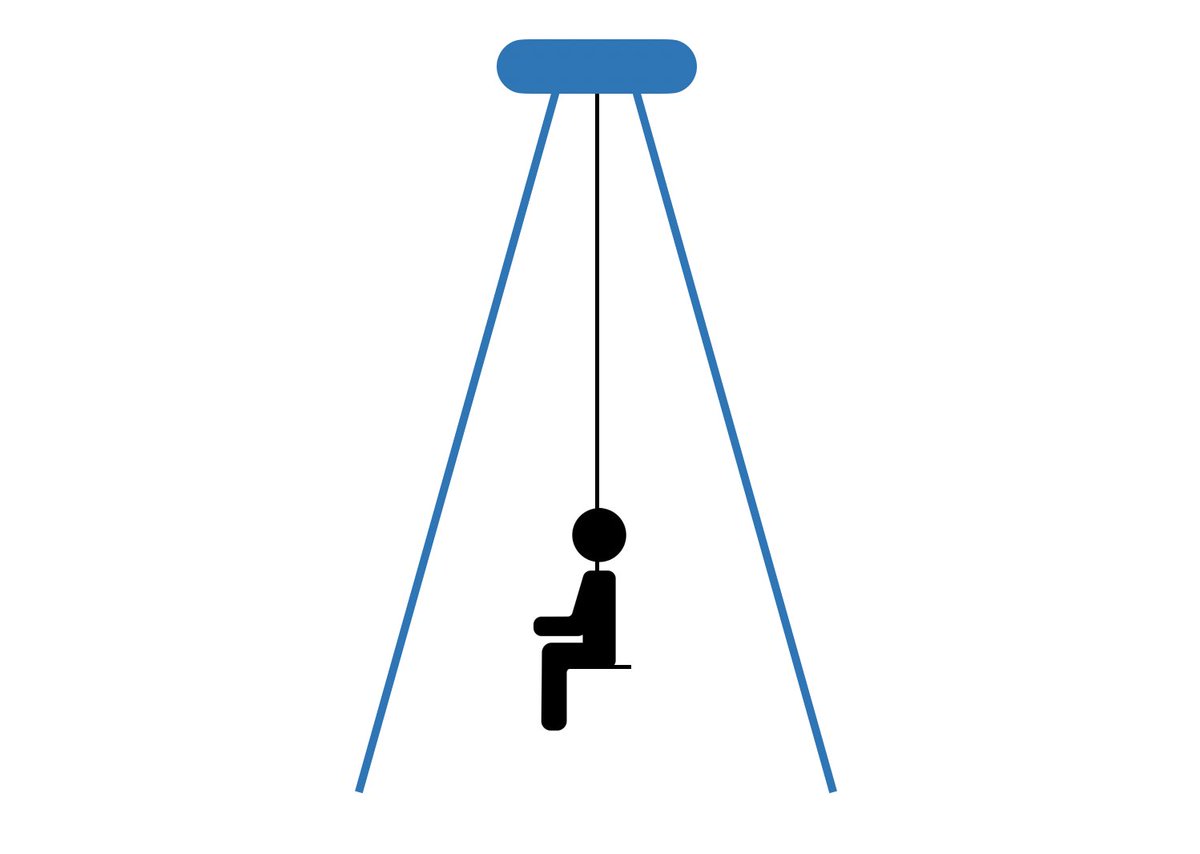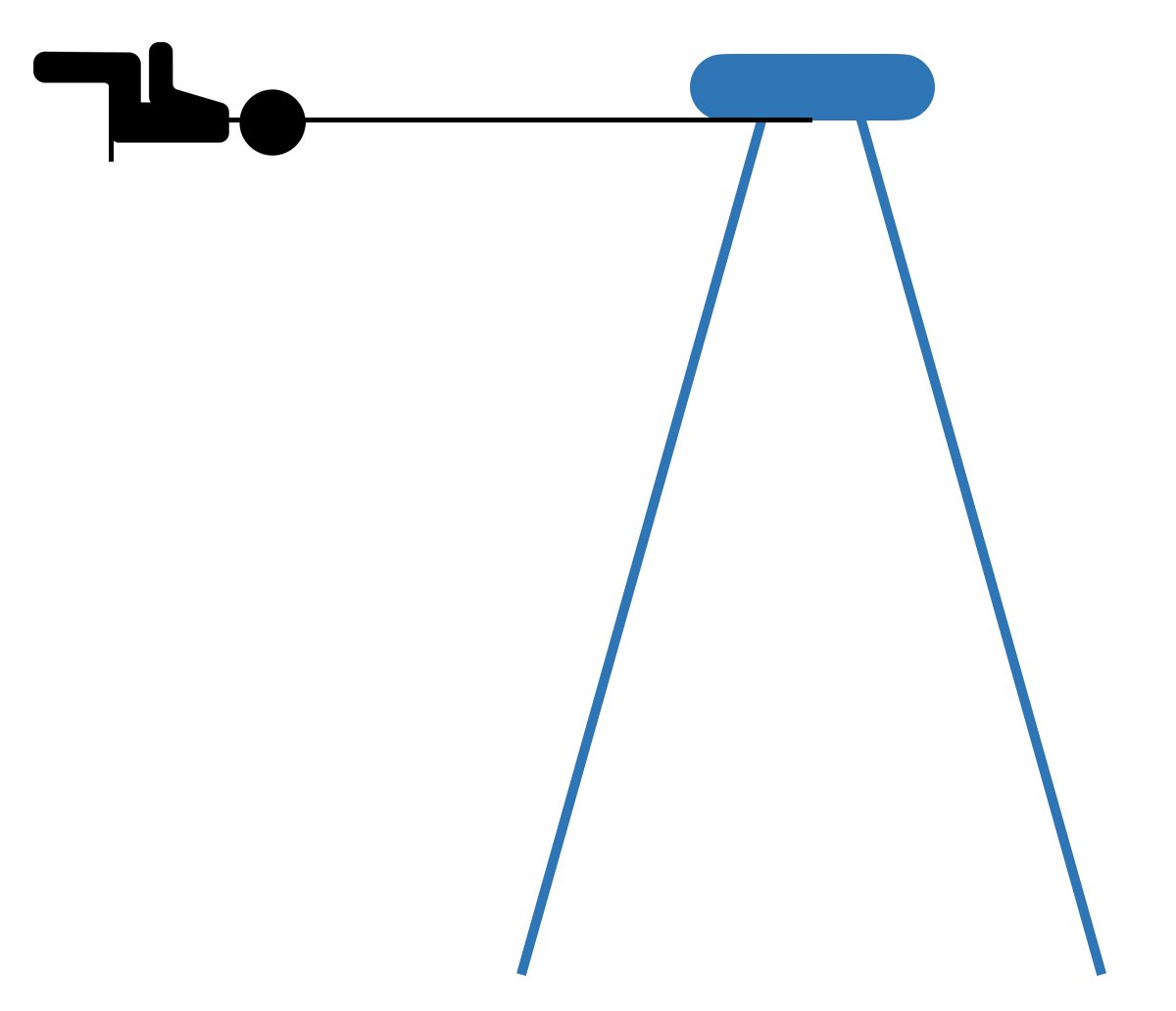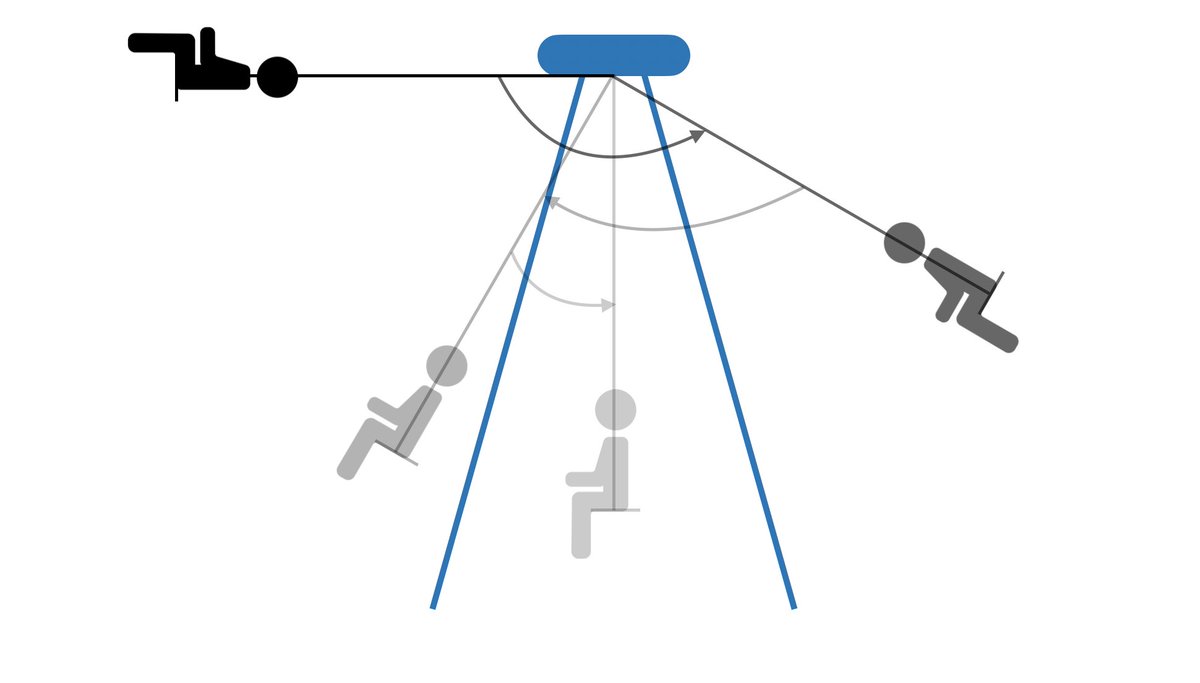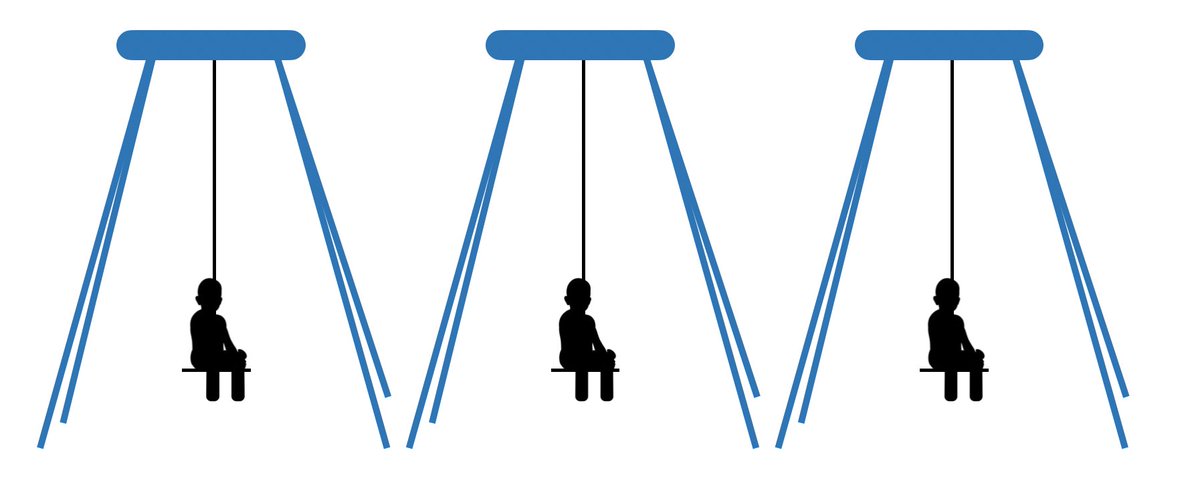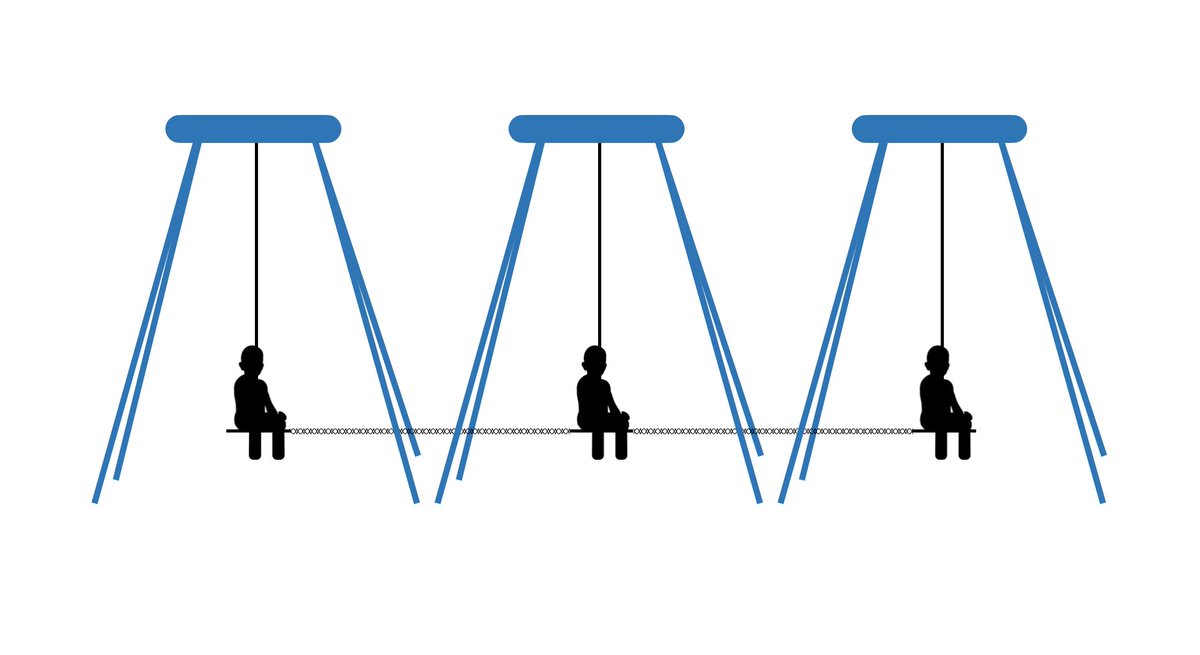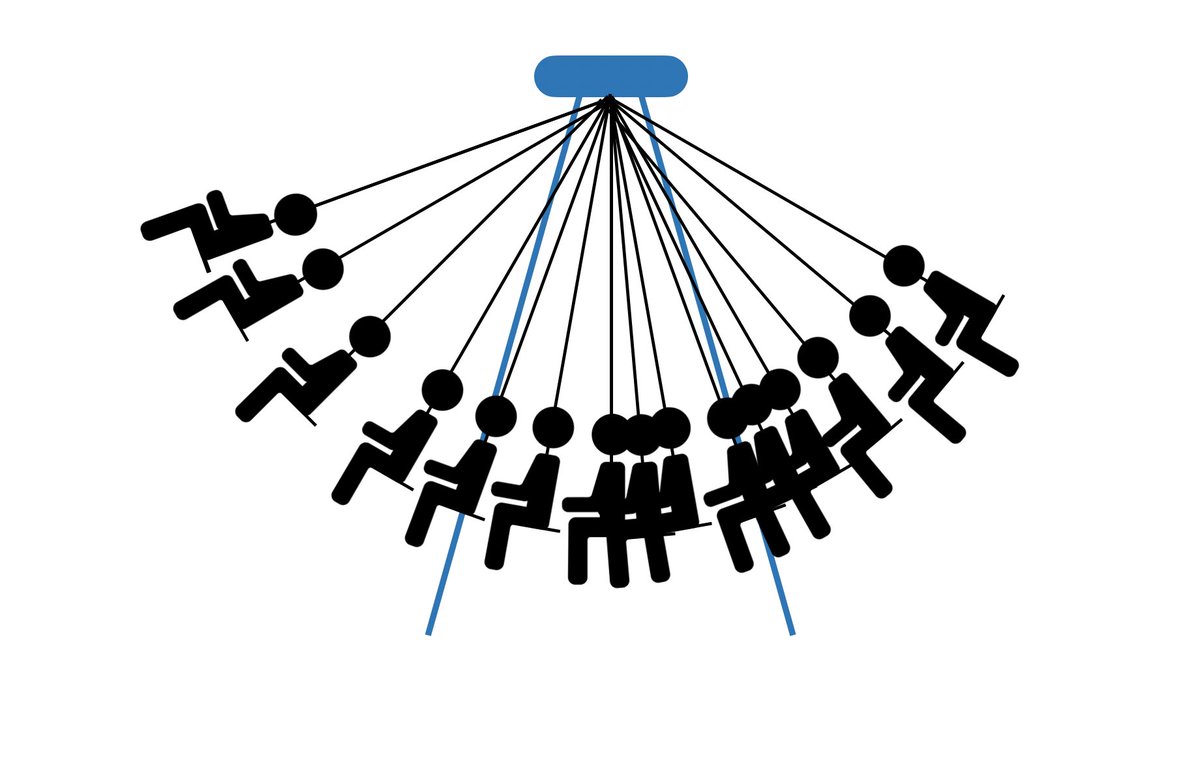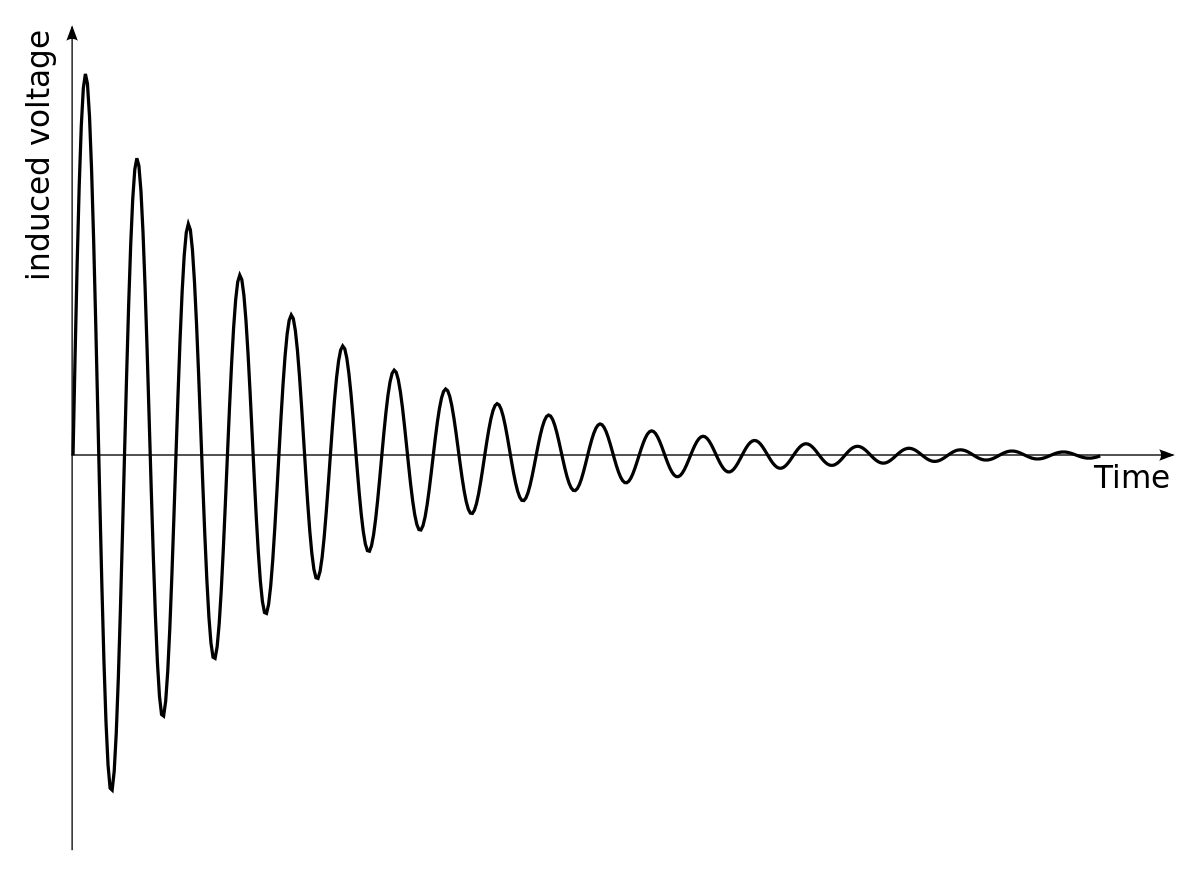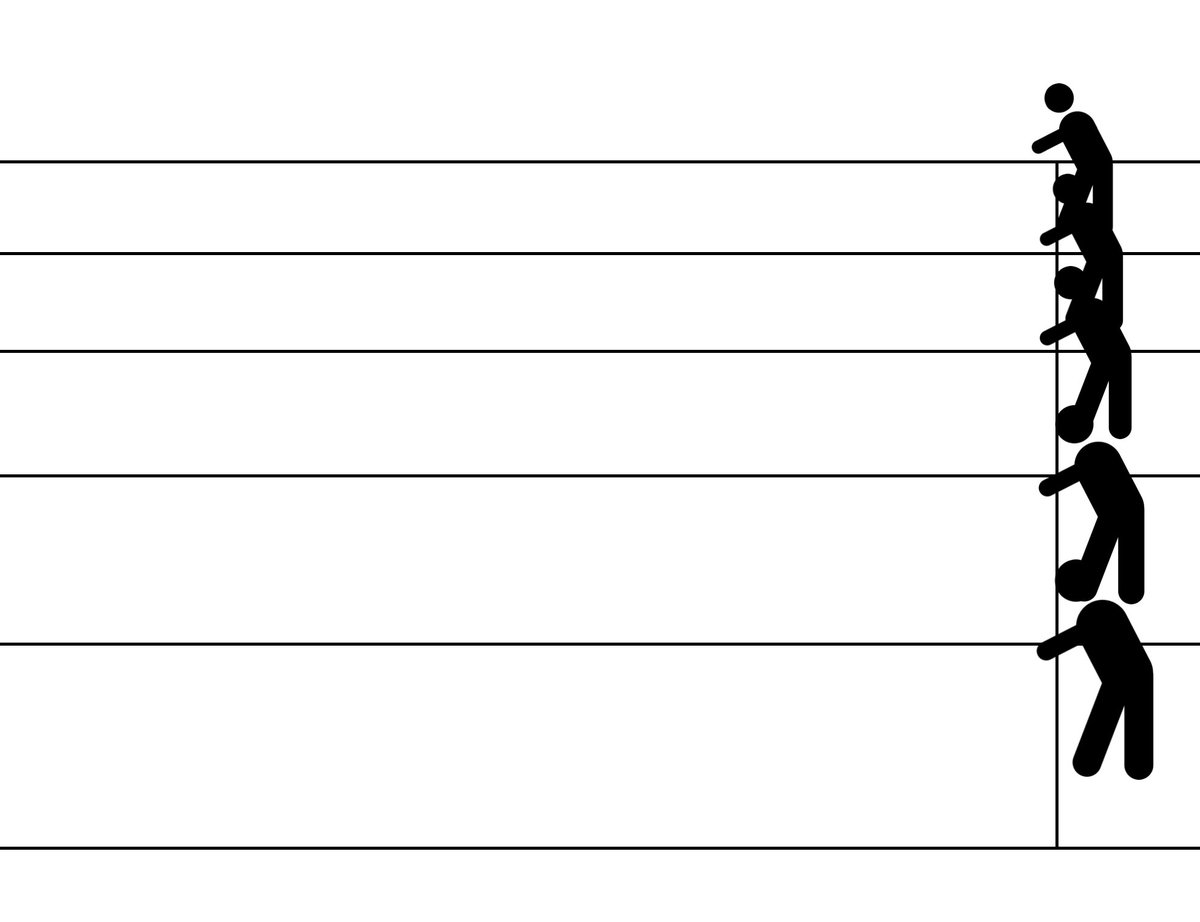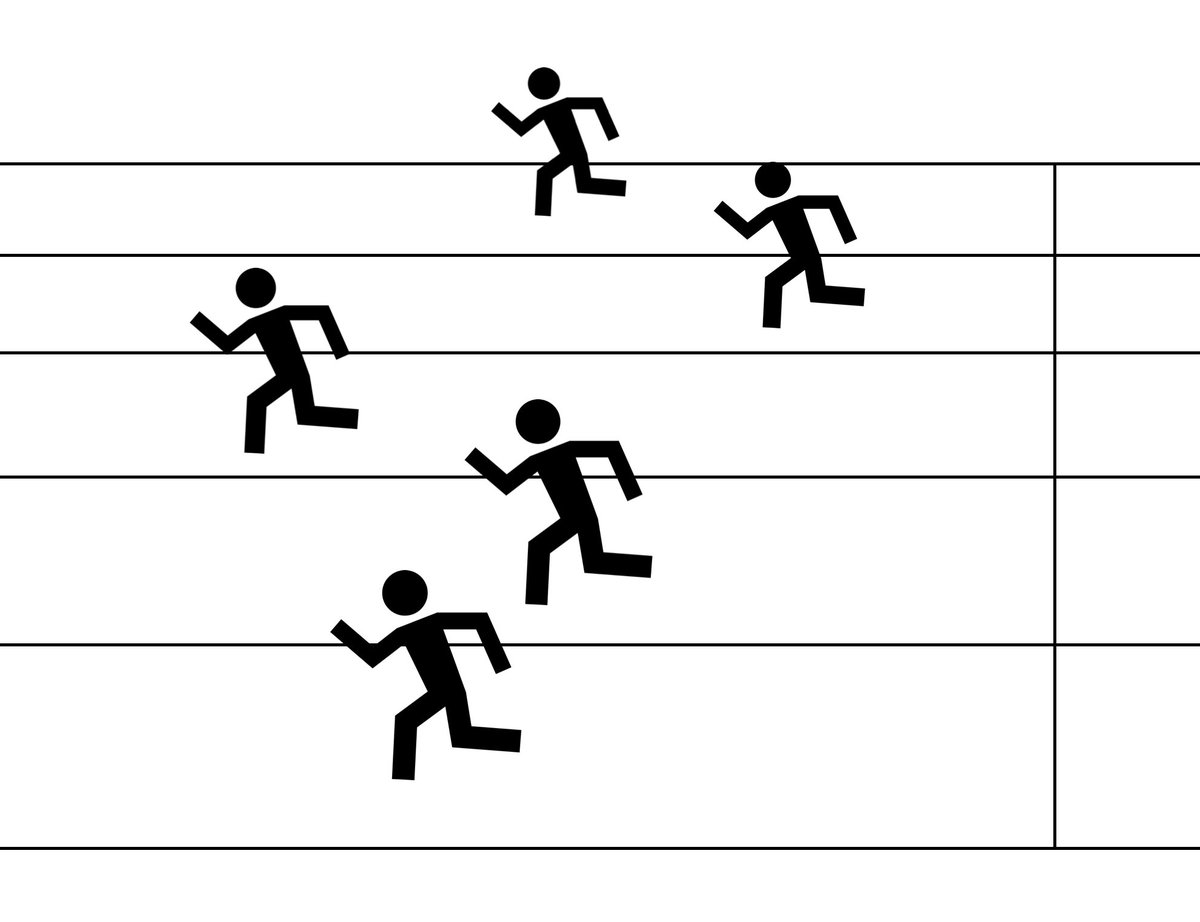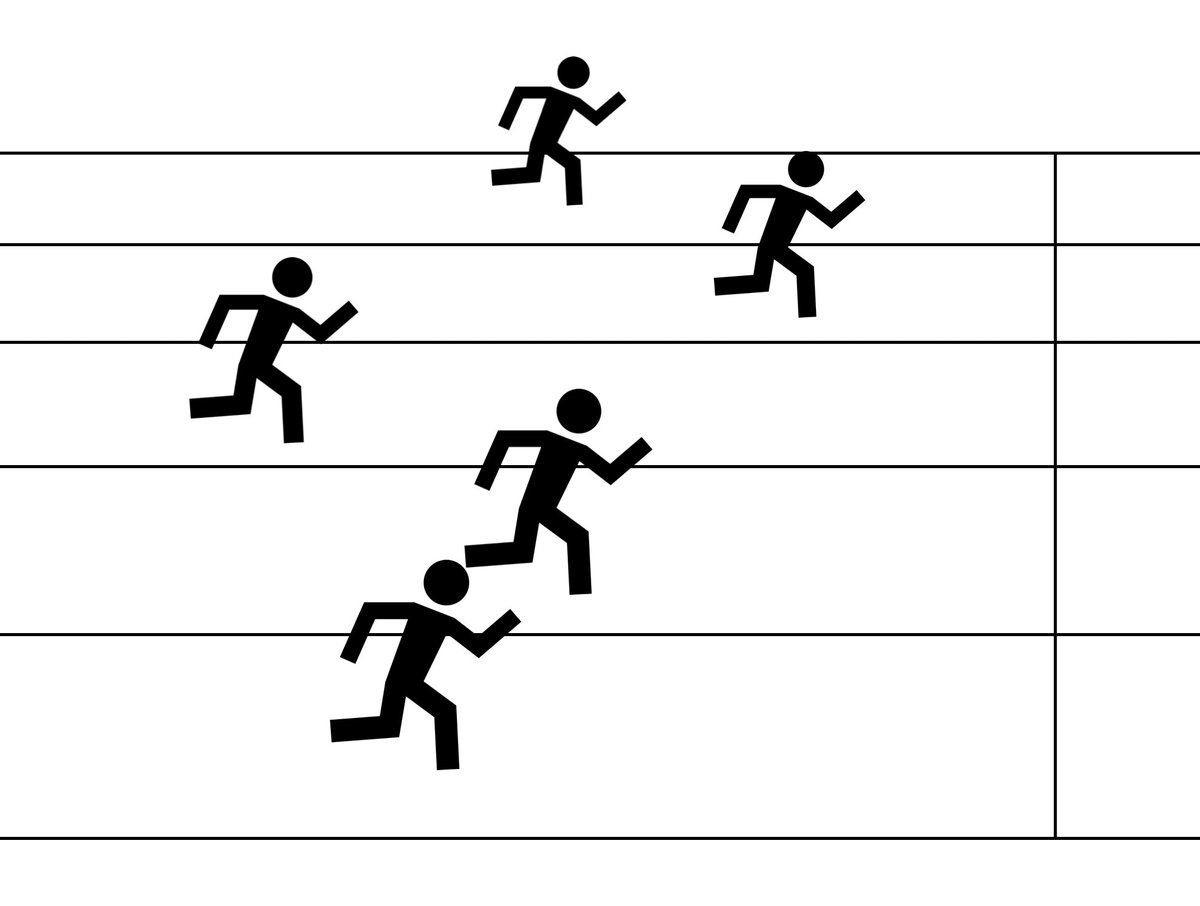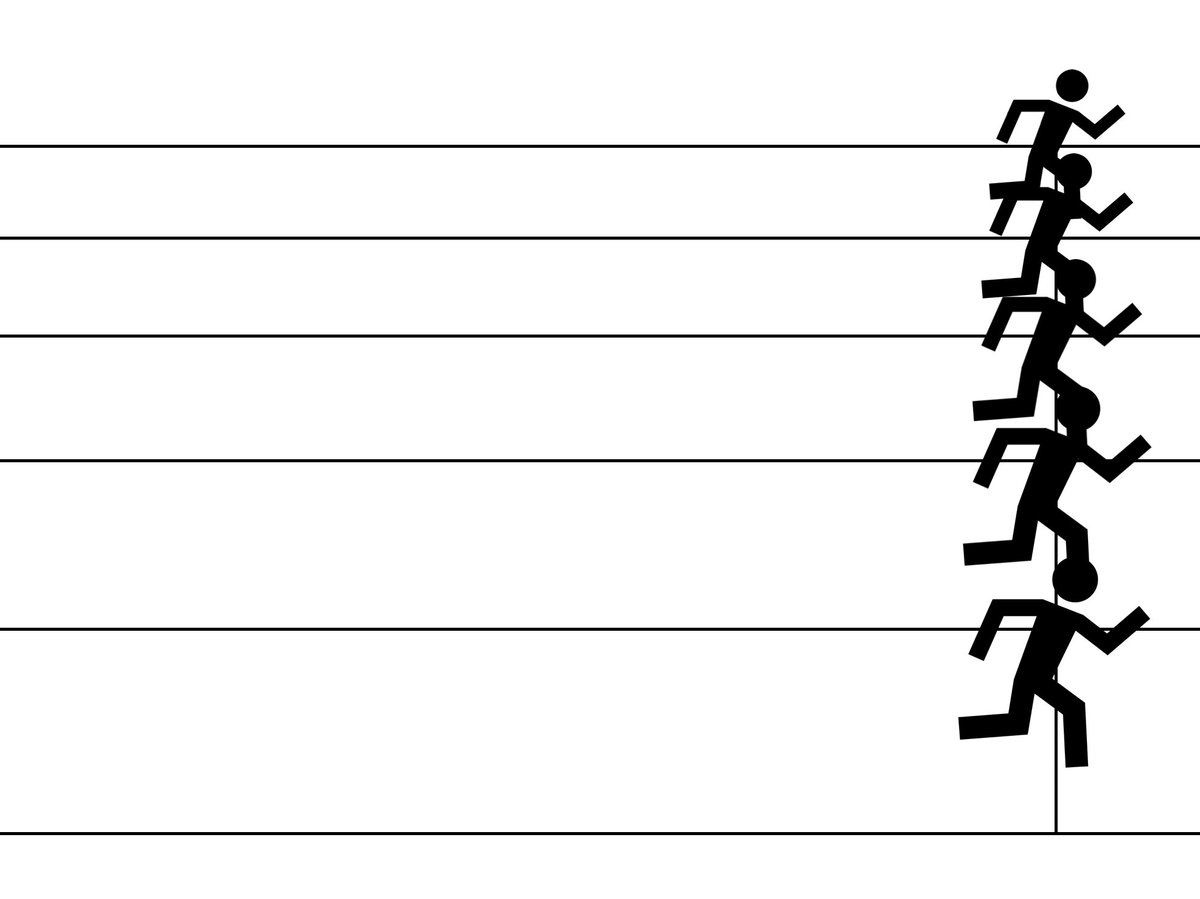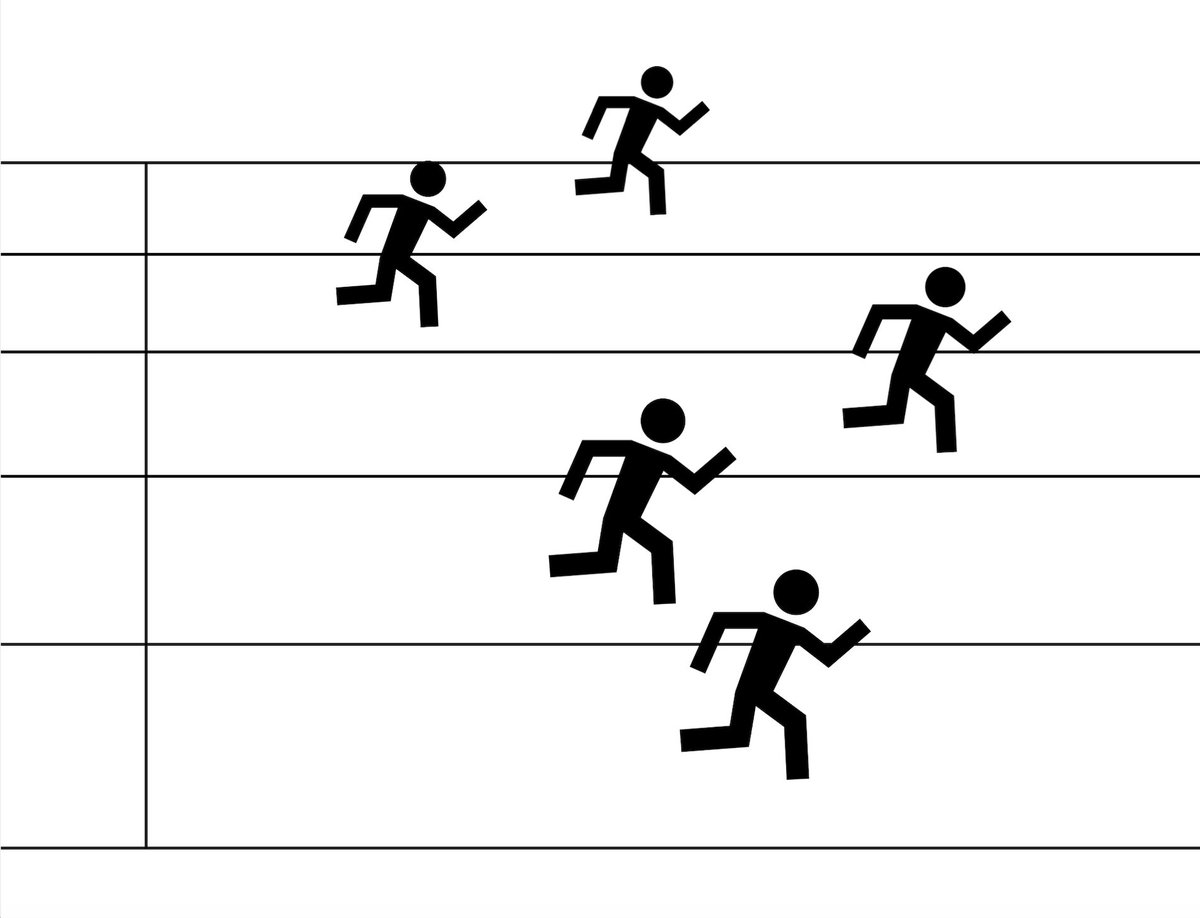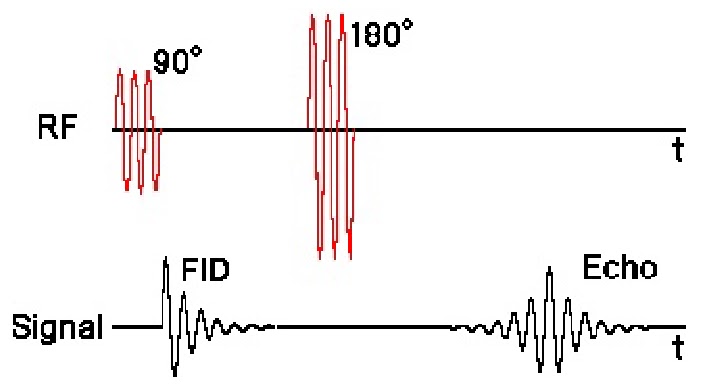How magnetic resonance works, explained with only analogies.
Disclaimer: this will be a purely classical description of nuclear magnetic resonance… I can’t think of any good analogies for quantum! (1/n)
Any MR-active nucleus generates a tiny magnetic field, which we call a spin. When we put that inside a much larger field, on average they’ll tend to align with the field. (2/n)
So if we have a lot of spins in the same field, we’ll measure a small magnetization that points in the direction of the field. (3/n)
This is like how the Earth’s gravitational field aligns a swing in the direction of the field (i.e. downwards). (4/n)
If the swing is just sitting there, that’s not very exciting. We want to measure the dynamics of the swing! (5/n)
Say you step behind your friend on the swing and start pushing them. No matter how hard you push, if it’s at the wrong frequency, nothing will happen. But if you push at the right frequency, which we call the RESONANT frequency, even very small pushes add up quickly. (6/n)
This is exactly what happens when we send in radio waves at the resonant frequency of the spins. If you keep pushing on the swing at resonance, eventually you’ll get to a point where the person is 90˚ to their starting position. In NMR, this is called a 90˚ pulse. (7/n)
But the gravitational field is still there, so swinging at a 90˚ angle is highly unstable and the swing will tend to “decay” toward its starting position. This decay of the swing to equilibrium is the same thing that spins do. We call this decay T1 relaxation. (8/n)
Now imagine we have a lot of swings nearby each other. (Yes, each swing is a spin). If we all push the swings to 90˚ at the same time, we’ll see the same T1 relaxation from our sideways perspective. Everything will decay in sync (or in phase) with each other. (9/n)
But each spin’s magnetic field interacts with the magnetic fields of other nearby spins. So this is like us adding tiny springs that are attached between each swing. In NMR, this is called dipolar coupling. (10/n)
Now when we do a 90˚ pulse, the coupling between each swing will cause small changes in swing time that leads to the oscillations going out of sync. We call this process dephasing. This is the main contributor to our second type of signal decay: T2 relaxation. (11/n)
In this picture we’re looking at our original sideways perspective but with a lot of different swings all coupled to one another. I’ve excluded the springs so it doesn’t get too messy, but you get the idea. If you have a hard time visualizing, think “double pendulum”. (12/n)
It’s relatively straightforward to see that T2 relaxation is always shorter than T1 relaxation, since the swings will go out of phase before they all decay to the same original place. (13/n)
The most important takeaway from this: we can only measure a signal when everything is in phase. If all the swings are out of phase, everything adds up to zero and we don’t see an overall signal. (14/n)
In an actual NMR experiment, this all contributes to the signal that we see after a 90˚ pulse, which is called a free induction decay. Like you would predict, this is a decaying exponential. (15/n)
Next I’ll talk about another very important part of NMR: the spin echo. We’ll move away from the swing analogy and instead think about athletes sprinting on a track. (16/n)
The different couplings between spins and their environment contribute to slightly different resonant frequencies. We can think of this as how different sprinters have slightly different speeds. When we start off, all of the sprinters are lined up at the starting line. (17/n)
We kick things off with a 90˚ pulse. This is the gunshot that starts off the race. At the start, all the sprinters are together and everything is in phase. But as the sprinters run, their different speeds lead to them spreading out and we see dephasing. (18/n)
Now we do something different. We send in a 180˚ pulse. This is the same thing as thinking of all the sprinters flipping direction and now running back toward the starting line. (19/n)
This is where things get interesting. All the faster sprinters now have MORE distance to cover, and all the slower sprinters have LESS distance to cover. So over the same amount of time all the sprinters will meet up again at the starting line and they'll all be in phase. (20/n)
Since everyone is in phase, we measure another signal. But as time continues to go on, the sprinters move in the opposite direction and go out of phase again. (21/n)
In NMR, this spin echo signal looks like a rising and then falling exponential, and is exactly what we see! (22/n)
This seems enough for now. If more analogies come to mind I might add to this thread, though things like chemical shift, J-coupling, etc. are a bit trickier. (23/n)

 Read on Twitter
Read on Twitter